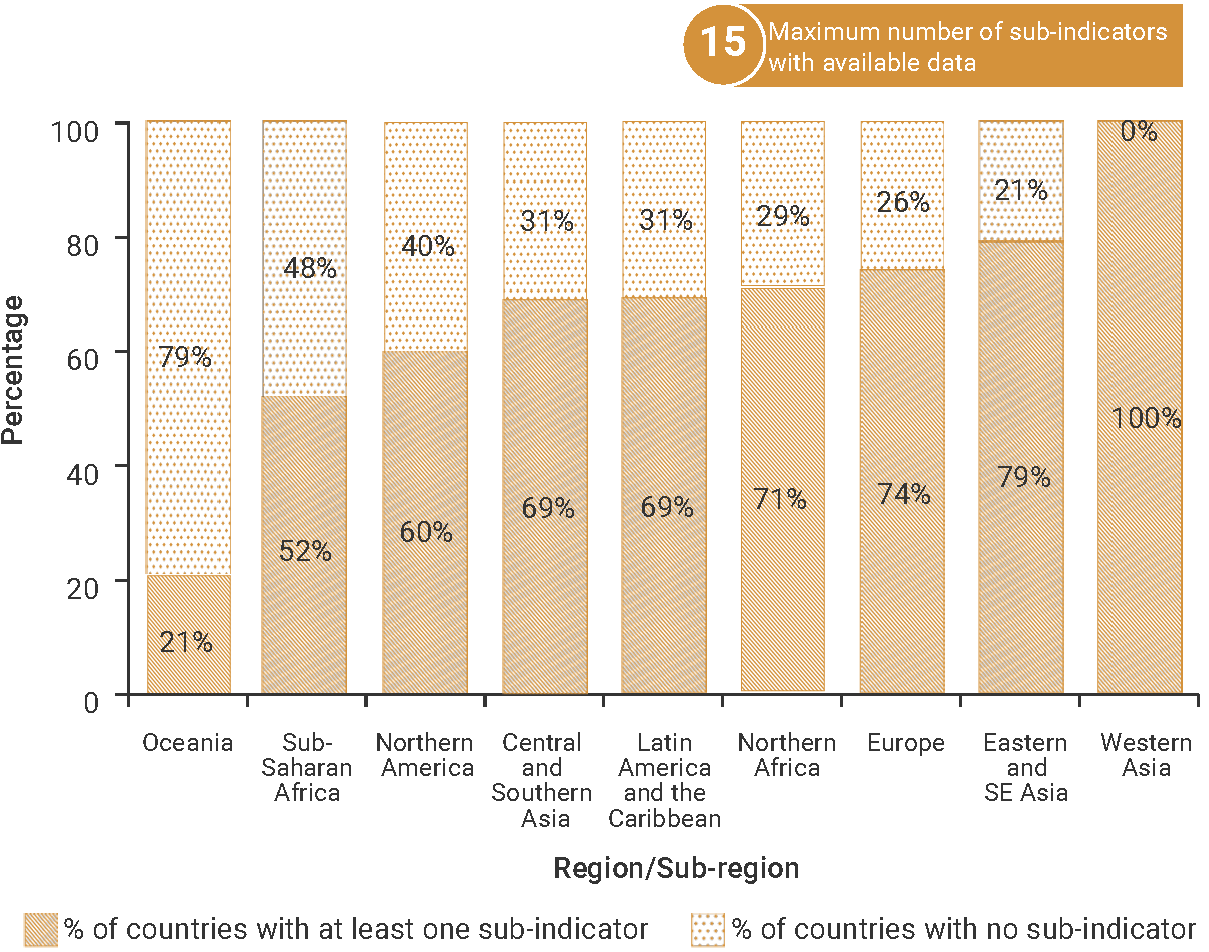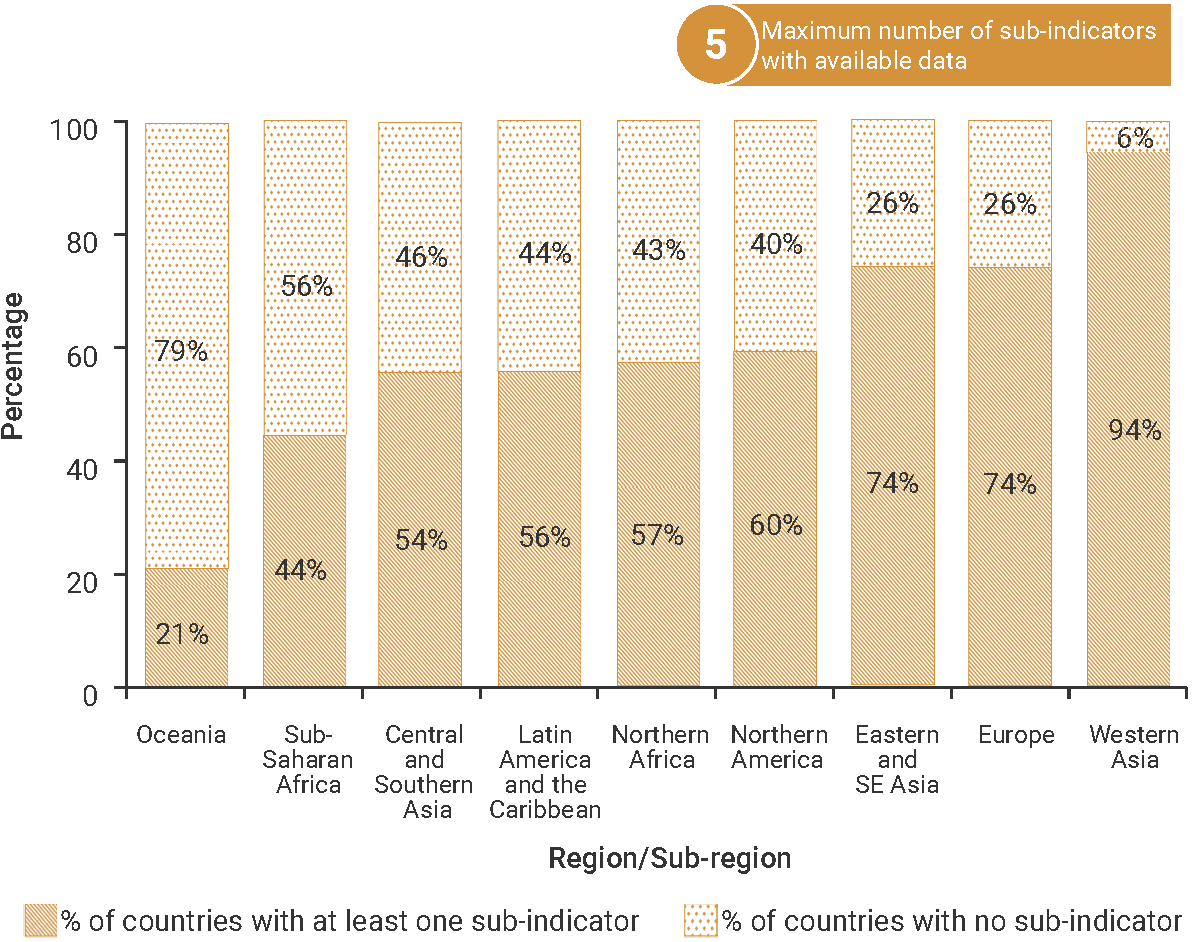SDG Indicator 12.4.2: (a) Hazardous waste generated per capita; and (b) proportion of hazardous waste treated, by type of treatment
1. Key features and metadata
Definition: This indicator monitors the generation, type of treatment and disposal of hazardous and municipal waste.
| Sub-indicator | Disaggregated by |
|---|---|
|
EN_TWT_GENV Total waste generation, by activity (tonnes) |
Activity |
|
EN_HAZ_TREATV Hazardous waste treated, by type of treatment (tonnes) |
Type of waste treatment
|
|
EN_MWT_TREATV Municipal waste treated, by type of treatment (tonnes) |
|
|
EN_MWT_TREATR Proportion of municipal waste treated, by type of treatment (%) |
|
|
EN_EWT_GENV Electronic waste generated (tonnes) |
No current data disaggregation available.
|
|
EN_EWT_GENPCAP Electronic waste generated, per capita (Kg) |
|
|
EN_EWT_COLLV Electronic waste collected (tonnes) |
|
|
EN_EWT_COLLPCAP Electronic waste collected, per capita (KG) |
|
|
EN_EWT_COLLR Proportion of electronic waste collected (%) |
|
|
EN_HAZ_GENV Hazardous waste generated (tonnes) |
|
|
EN_HAZ_PCAP Hazardous waste generated, per capita (Kg) |
|
|
EN_HAZ_GENGDP Hazardous waste generated, per unit of GDP (kilograms per constant 2015 USD) |
|
|
EN_HAZ_TRTDISR Proportion of hazardous waste treated or disposed (%) |
|
|
EN_HAZ_TRTDISV Hazardous waste treated or disposed (tonnes) |
|
|
EN_HAZ_EXP Hazardous waste exported (tonnes) |
|
|
EN_HAZ_IMP Hazardous waste imported (tonnes) |
|
|
EN_MWT_GENV Municipal waste generated (tonnes) |
|
|
EN_MWT_COLLV Municipal waste collected (tonnes) |
|
|
EN_MWT_EXP Municipal waste exported (tonnes) |
|
|
EN_MWT_IMP Municipal waste imported (tonnes) |
Sources of information: Data is provided by national governments, including National Statistical Offices (NSOs), Ministries of the Environment and other relevant organizations through the UNSD/UNEP Questionnaire on Environment Statistics (waste section).
Related SDG Indicators: 11.6.1 (Proportion of urban solid waste regularly collected and with adequate final discharge out of total urban solid waste generated, by cities), 12.5.1 (National recycling rate, tonnes of material recycled) and 14.1.1 ((a) Index of coastal eutrophication; and (b) plastic debris density).
2. Data availability by region, SDG Global Database, as of 02 July 2025


3. Proposed disaggregation, links to policymaking and its impact
| Proposed disaggregation | Link to policymaking | Impact |
|---|---|---|
|
Hazardous waste generated, by relevant sub-national territorial division (tonnes)(UNEP 2021e) Applies to:
|
This disaggregation is useful for spotting and localizing the main sources of hazardous waste and for taking appropriate measures to reduce sources of hazardous waste pollution to minimize adverse effects on human health and the environment(UNEP 2021e). It can be used to support sound management of hazardous waste at the local level to minimize associated health and environmental risks(OPN n.d.). This disaggregation is consistent with the Basel Convention - Article 4(UNEP 2019e). |
Having improved information on the quantities of hazardous waste generated at local levels empowers policymakers with required evidence to lower such impact on the surrounding environment and communities, which can exacerbate as air, water, soil, and land pollution. In addition, local policymakers and authorities have the prominent role ofenforcing waste legislation and implementing national waste strategies to prevent the impacts of inappropriate waste management, especially for poorer populations who are the most vulnerable(UNEP 2015; OECD 2023c). |
|
Hazardous waste generated by economic sector (ISIC) (tonnes)(UN 2008a; UNEP 2021e):
Applies to:
|
This disaggregation provides a breakdown of the production of hazardous waste by economic activities in accordance with the ISIC Rev.4(UN 2008a). It is helpful in identifying the main sources of hazardous waste generation and adapting, as necessary and on the basis of enhanced evidence, the hazardous waste policy and required actions for reducing impact on the surrounding environment and communities. This disaggregation is consistent with the Basel Convention - Article 4 and Annex 1(UNEP 2019e). |
Assessing quantities of generated hazardous waste can lead to implementing policies that target the sound management of hazardous waste, which protect the surrounding environment and communities as a result(UNEP 2015; OECD 2023c). |

